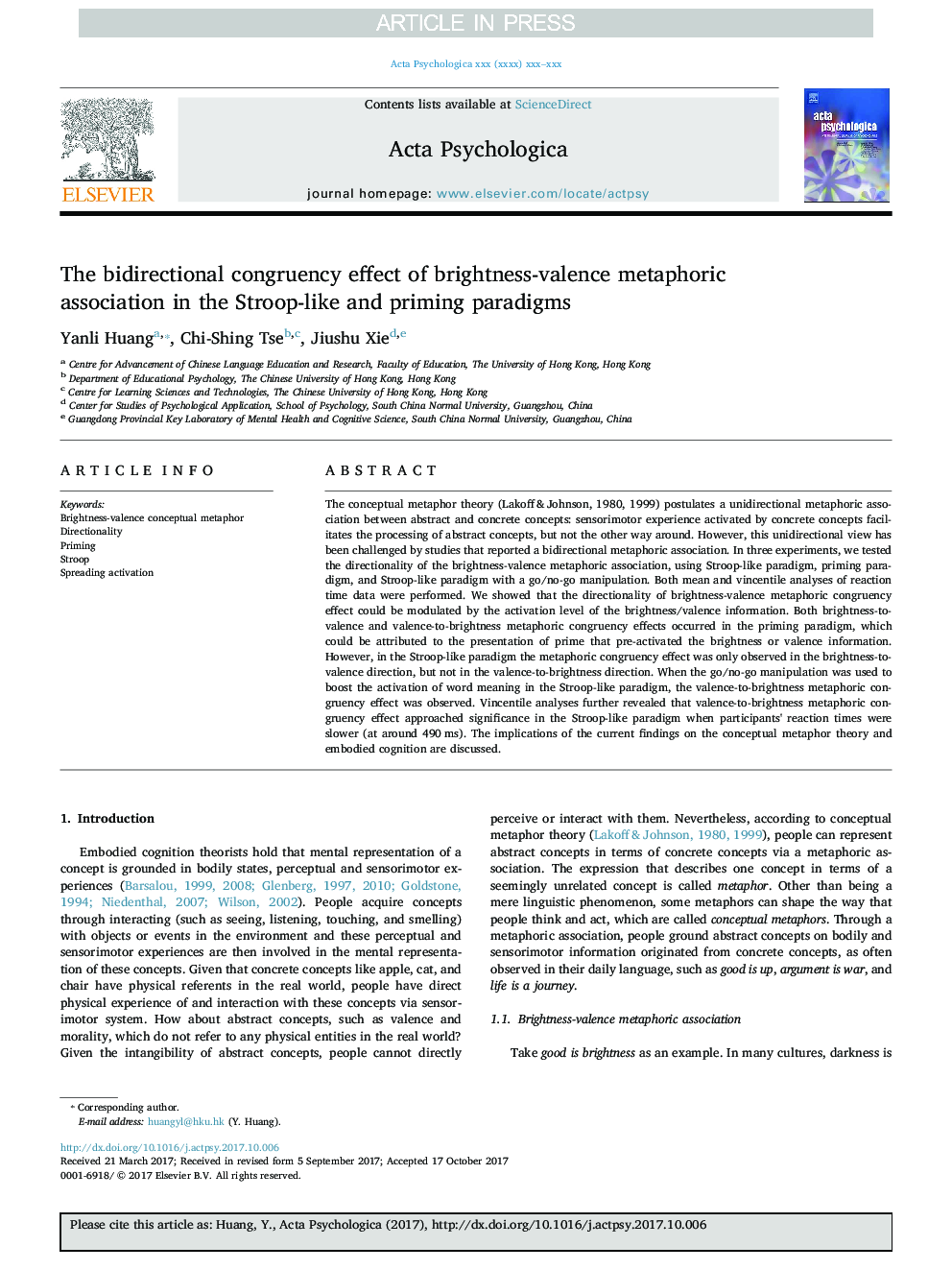| Article ID | Journal | Published Year | Pages | File Type |
|---|---|---|---|---|
| 10226697 | Acta Psychologica | 2018 | 17 Pages |
Abstract
The conceptual metaphor theory (Lakoff & Johnson, 1980, 1999) postulates a unidirectional metaphoric association between abstract and concrete concepts: sensorimotor experience activated by concrete concepts facilitates the processing of abstract concepts, but not the other way around. However, this unidirectional view has been challenged by studies that reported a bidirectional metaphoric association. In three experiments, we tested the directionality of the brightness-valence metaphoric association, using Stroop-like paradigm, priming paradigm, and Stroop-like paradigm with a go/no-go manipulation. Both mean and vincentile analyses of reaction time data were performed. We showed that the directionality of brightness-valence metaphoric congruency effect could be modulated by the activation level of the brightness/valence information. Both brightness-to-valence and valence-to-brightness metaphoric congruency effects occurred in the priming paradigm, which could be attributed to the presentation of prime that pre-activated the brightness or valence information. However, in the Stroop-like paradigm the metaphoric congruency effect was only observed in the brightness-to-valence direction, but not in the valence-to-brightness direction. When the go/no-go manipulation was used to boost the activation of word meaning in the Stroop-like paradigm, the valence-to-brightness metaphoric congruency effect was observed. Vincentile analyses further revealed that valence-to-brightness metaphoric congruency effect approached significance in the Stroop-like paradigm when participants' reaction times were slower (at around 490Â ms). The implications of the current findings on the conceptual metaphor theory and embodied cognition are discussed.
Related Topics
Life Sciences
Neuroscience
Cognitive Neuroscience
Authors
Yanli Huang, Chi-Shing Tse, Jiushu Xie,
